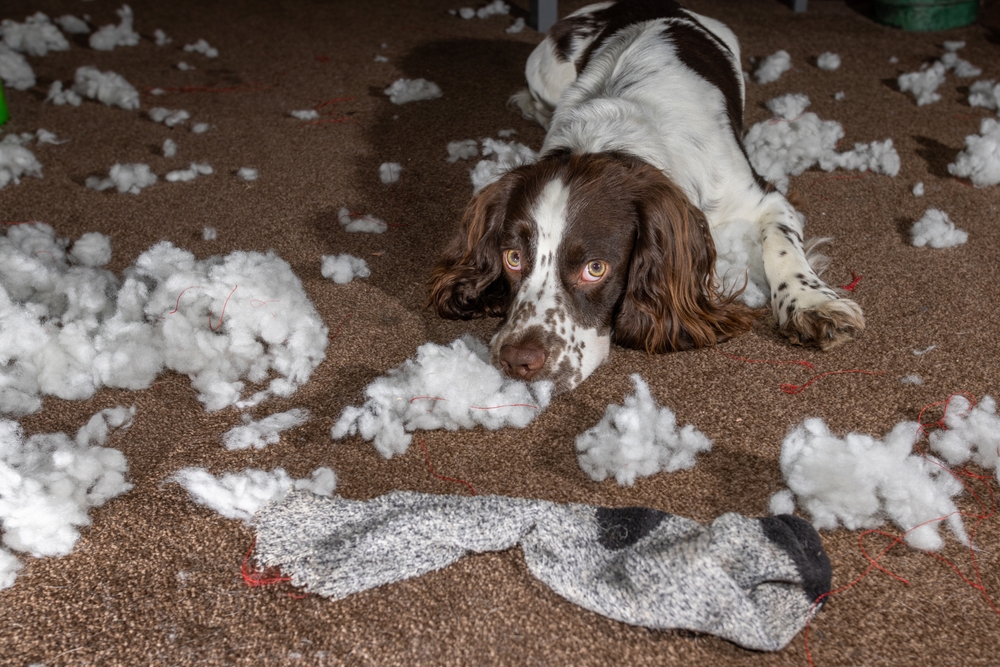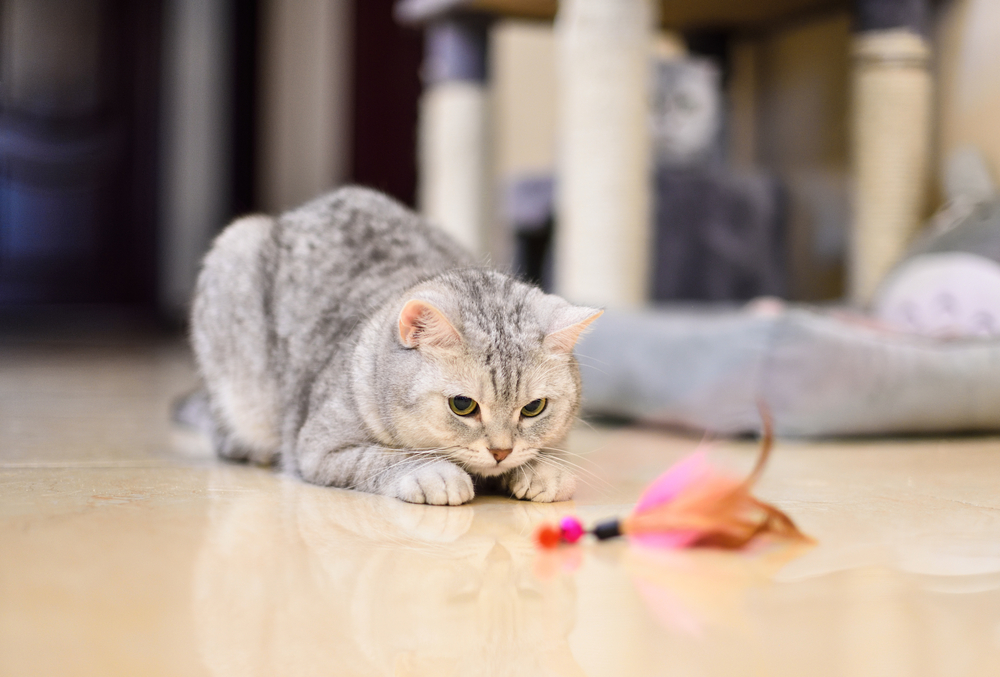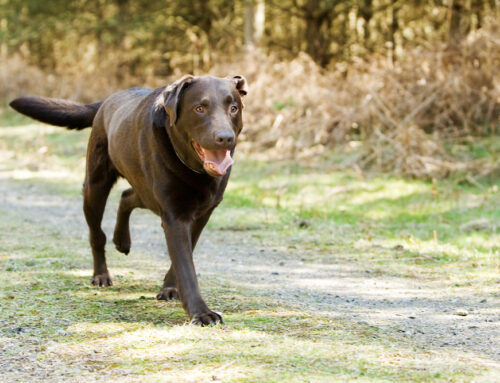Dogs and cats are curious creatures who love to play, which helps them stay socially engaged, physically active, and mentally sharp, simulating hunting and scavenging behaviors that are part of their DNA. Interactive toys are a great way to provide pets with needed enrichment. However, to prevent your furry pal from becoming bored, you must frequently rotate their toys. If you are always purchasing new toys for your pet, you are likely feeling the strain in your wallet. However, you don’t have to overspend on a toy for it to be fun for your pet. Our Liberty Veterinary Hospital team explains why enrichment is important for pets and how to make do-it-yourself (DIY) toys that will keep your four-legged friend entertained for hours, without breaking the bank.
What is pet enrichment?
Enrichment stimulates your pet’s senses and keeps them physically active and mentally engaged in the world around them. Anything your pet finds interesting can be enriching, including walks, play, or watching birds through a window. Various enrichment types help fulfill a pet’s overall needs, and most activities belong to more than one enrichment category. Consider these five main pet enrichment types:
- Social — Promotes positive contact with other pets and people, including walks and playgroups.
- Nutritional — Encourages natural foraging and feeding behavior, including food puzzle toys, and treat or chew rotation.
- Occupational — Gives pets a job, including sports, puzzle games, and training sessions.
- Sensory — Stimulates the senses, including sight, sound, and smell, using objects, novel scents, and music.
- Physical — Creates a complex living space, including toys, and other interactive and interesting objects.
Toys that provide at-home pet enrichment
Toys provide fun enrichment opportunities for pets in their home environment, preventing boredom, loneliness, hyperactivity, and resulting behavior problems. When considering your pet’s mental enrichment, take these factors into account:
- Rotate toys frequently to maintain your pet’s interest.
- Choose toys that stimulate your pet’s senses.
- Provide toys that encourage natural behaviors such as digging, foraging, stalking, and hunting prey.
Do-it-yourself enrichment toys for cats
The best DIY enrichment toys for cats use materials you already have around the house, including cardboard boxes, and toilet paper and paper towel tubes. Cats also enjoy plastic bottles’ and tissue papers’ crinkle sounds. Your cat will have fun with these creative DIY toys:
- Cardboard tube feeders — Seal a cardboard tube’s ends using nontoxic glue, and cut one or more small holes in the sides. Add treats, and watch your cat bat the tube to access the tasty morsels.
- Cardboard box feeders — Place treats in a shallow cardboard box, cut holes in the box’s top, and close the lid. Watch your cat have fun trying to access the goodies.
- Houses, tunnels, and mazes — Use sturdy boxes, plastic totes, and milk crates to create an epic cat jungle gym.
- Balls and batting toys — Crumple paper into a ball, or place a jar lid on the floor near your cat. These extremely easy DIY toys are always fun and interesting to bored cats.
Do-it-yourself enrichment toys for dogs
Homemade toys for dogs need to be sturdier and more chew-proof than toys for cats. Your dog will have fun with these creative DIY toys:
- Cardboard feeders — Similar to the DIY cat feeders described earlier, boxes and cardboard tubes are good treat dispensers for small dogs who won’t immediately rip the paper to shreds. However, if your large dog enjoys shredding anything into which they can sink their teeth, simply give them a cardboard box to shred to their heart’s content. You can also nest several boxes in one, adding a treat to the core. Your dog will enjoy lots of messy destruction!
- Snuffle mats — Tie fleece material strips to a heavy-duty rubber mat. Spread treats among the fleece strips and let your dog snuffle through to find the tasty morsels.
- Muffin tin game — Hide treats in a muffin tin and place a ball over each well, so your dog has to knock off each ball to reach the treats within the muffin tin well.
- Ball pit — Fill a baby pool with balls and mix in treats, so your dog has fish for the goodies. If your dog has mobility issues, avoid this activity, as they could step on a ball and slip.
Pet enrichment toy safety tips

When you make toys at home, be extremely mindful about safety. Always use nontoxic materials, including tape and glue, and check a toy’s durability before giving it to your pet. A persistent pet can easily destroy a DIY toy. Although some DIY toys are meant to be destroyed, you should always directly supervise your pet while they play with any, DIY or store-bought, toy to ensure they do not swallow cardboard, plastic, rubber, or fabric pieces.
Owning and caring for a pet is expensive, but you can find ways to cut costs and still provide them with everything they need for a healthy, fulfilling life. Making your pet’s enrichment toys is a cost-effective way to keep your furry pal engaged and reduce the cognitive decline that often accompanies aging. In addition to enriching your pet’s mental health, ensure you also provide for their physical health by scheduling your four-legged friend’s annual wellness and preventive care examination with our Liberty Veterinary Hospital team.








Leave A Comment